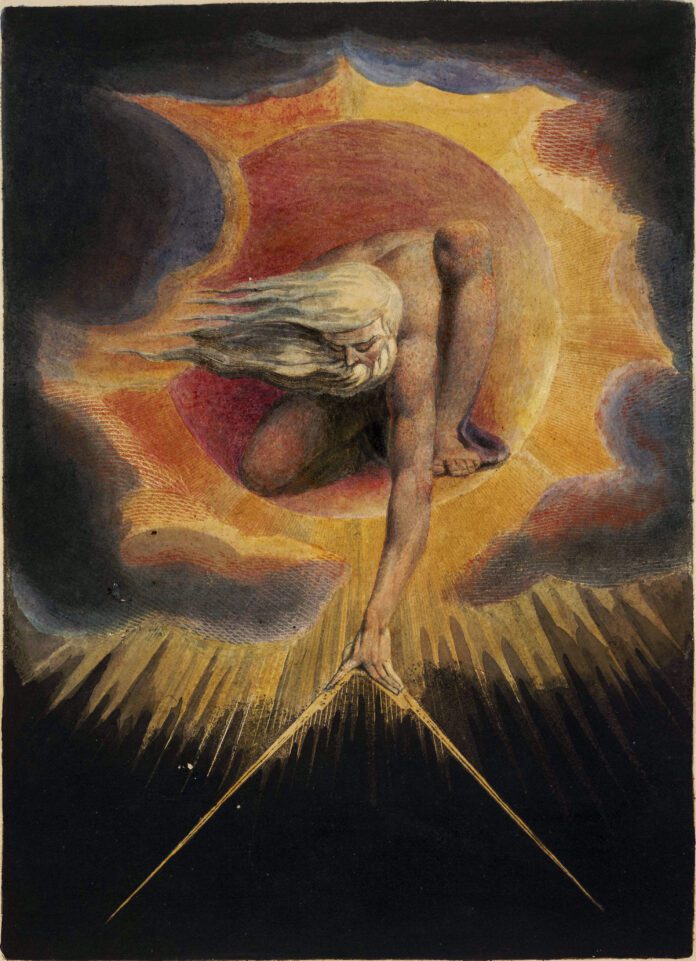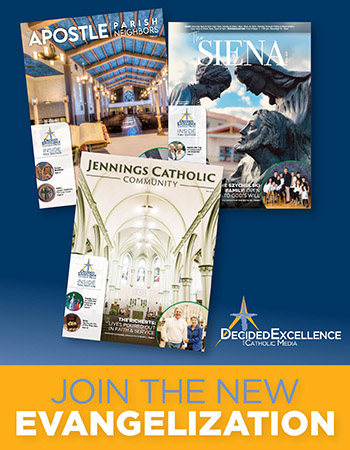At Creation, all three members of the Trinity act to bring into existence time and space and all that is in it. As St. Irenaeus explains, the Father is the Creator who creates with His two hands: the Son who is the Word spoken at creation, and the Spirit who is the Wisdom present in creation. The Father is the source of all things, the Son brings forth and holds the material realm in existence, and the Spirit orders that realm intelligently and beautifully.
God made time and space and holds it in existence, but it is a completely separate thing from God. It is common to envision time as a straight line that contains all of the material happenings in sequential order. This is because we experience time in a linear fashion—one event after another. Yet God, being outside of time, experiences it differently. We could imagine God the Father as a man holding his hands out in front of Him. He bends down and speaks into His hands which creates the finite timeline of our universe into his hands. From His vantage point, He can see every moment in time, and the Word that He spoke to create is infused into time and space while His breath (the Holy Spirit) from the spoken Word gives it life and order. In this way, God is the Alpha and Omega (beginning and end) because He is directly interacting with each moment and area of time and space.
The Word of God interacts with the beginning of human history in a non corporeal way. God’s Word forms and guides the nation of Israel through His angels and the prophets. God uniquely interacts with time and space in the fullness of time (Galatians 4:4) when the Word becomes flesh in the person of Jesus Christ. Prior to His death, resurrection, and ascension into heaven, Jesus humbly gives Himself to us in the Eucharist, as the passageway to eternal life until He comes again at the end of time.
With the Word of God preparing the world for Jesus prior to the incarnation, and the Eucharist being the presence of Jesus to us until His second coming, we might return to the image of God the Father, bending over His two hands that hold the timeline of creation that He spoke into existence, drawing close to it. Instead of the flat line that we usually envision with a timeline, we might imagine time as a parabolic or mountain shape, with the beginning of time slowly rising to the apex and then falling again. The point of time that is closest to the mountain peak is the fullness of time in which Jesus lived, taught, healed, suffered, died, and resurrected. This peak is closest to the mouth of the Father. So close that you could say that heaven kisses earth in the fullness of time. Mountain imagery is present throughout the Bible, with the peak being the place that one communes with God. But as the scriptures tell us, the only ones who can climb the mountain of the Lord are those with clean hands and pure heart (Psalm 24:3-4). Before the fullness of time, the people of God, Israel attempted to climb the mountain of time to the Lord. After the fullness of time, the people of God, the Church, try to do the same. Yet neither could succeed on their own. Jesus alone climbs the mountain for Israel where they failed, and those in the Church receive Jesus in the Eucharist to climb the mountain in Him where otherwise they would not have the strength to do so. Thus, from both sides of the fullness of time, the Word of God (both spoken and incarnate) is leading the people of God to the fullness of time and the loving embrace of the Father.
This imagery, while imperfect, helps illustrate the purpose of time and space. It is to be a place that God is calling us to intimacy with Him. It is a gift that leads us to a greater gift that has yet to be received. For now, in time, we are His children. But what we will be, outside of time, has not been revealed (1 John 3:2). We only know that the purpose of time and space is to be a place where God reveals Himself to us and draws us into intimacy with Himself.
Originally published in Prime Soil Magazine | Vol. 1 No. 2
Originally presented at The 10th National Eucharistic Congress in July 2024






